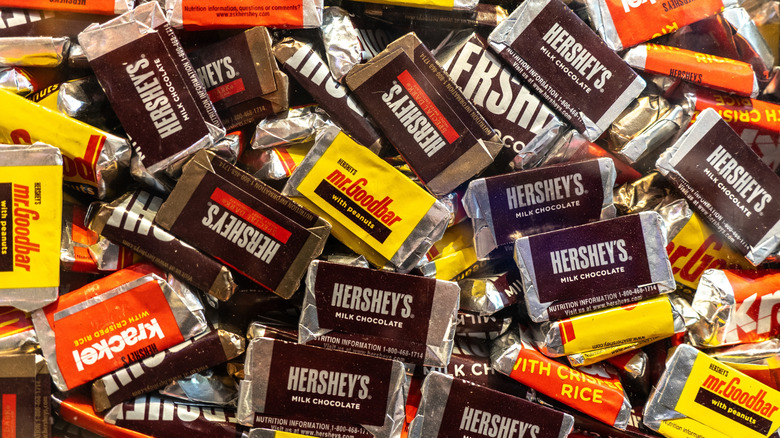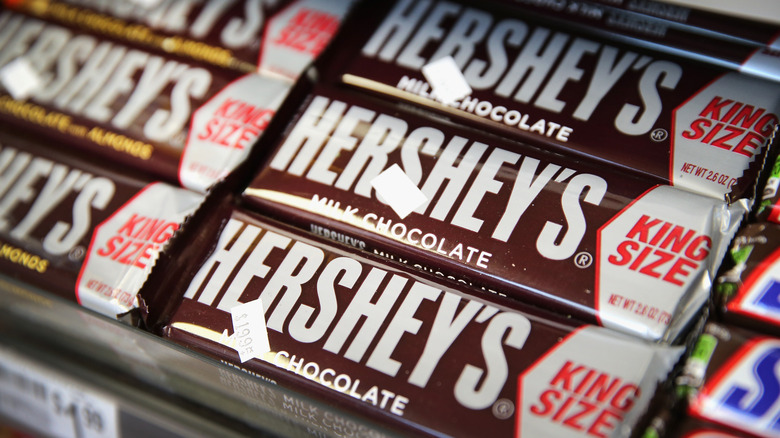What Is The 'PGPR' In Chocolate?
The confectionery world was forever transformed after Milton Hershey mass-produced his beloved milk chocolate bar in 1900. No longer limited to just local chocolatiers, chocolate bars could be enjoyed by anyone regardless of their geographic location. However, as a food company's market grows bigger and bigger, its formulas often evolve, whether to reduce costs or streamline the manufacturing process. This is the case for many chocolate companies in the modern age, which is likely why Hershey's finances are often stronger than expected. One such example comes from 2006 when Hershey's introduced PGPR – an unfamiliar ingredient to most Americans -– into a number of its chocolate products.
PGPR is the abbreviated name of polyglycerol polyricinoleate, also known as E476 in the European Union. Derived from the lipids of castor bean oil, soybean oil, or sunflower oil, PGPR is commonly added to chocolate-based food products as an emulsifier. Oil and water don't mix naturally, so emulsifiers such as PGPR are added to better incorporate the fats found in cocoa butter or milk, improving the consistency and texture in the process. PGPR is also added to chocolate to reduce its viscosity, which helps prevent hard sugar crystals from forming. This reduced viscosity also improves the chocolate molding process, as the runny, melted chocolate will easily pour into molds.
For a brief period of time, Hershey's removed PGPR from its Hershey Bar
In 2015, the Hershey Company removed PGPR from its iconic milk chocolate Hershey's Bar, Reese's Peanut Butter Cups, and Hershey's Kisses. This came at a time when consumers' demands were greatly changing, favoring natural, easy-to-pronounce ingredients in their food.
"A lot of these ingredients pre-date me," said Will Papa, VP and Chief Research & Development Officer at the Hershey Company. "Some of the artificial ingredients help make the products easier to manufacture. Easier to mold and flow better. Historically, artificial ingredients can be more consistent, too. You can deliver more of a consistent product with them" (via Fox Business).
However, the company appears to have changed its stance on PGPR since 2015, as the chocolate giant has reincorporated the emulsifier back into its massive list of Hershey's bar flavors. In its Frequently Asked Questions webpage, the company claims that PGPR comprises less than 1% of its milk chocolate today. For worried consumers, the Panel on Food Additives and Nutrient Sources Added to Food (ANS) asserted that PGPR is safe to consume, creating a limit of 7.5 milligrams of PGPR per person, per day.
So, whether you're ready to celebrate Halloween early or just relax on the couch with a chocolate bar in hand, just know that every ingredient, no matter how unfamiliar, plays a vital role in your sweet treat's journey to the candy store.

